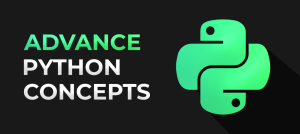
- PyCharm – Community Edition
Introduction
Advantages of PyCharm
Project creation
- File Handling
- Creating a file in a directory
b. Open the file in the python
c. Different ways to open the file in Python - File Encoding and Encoding Types
e. Writing to the file
f. Appending the data to the existing file
g. Modes of operations
h. Seek and tell methods
i. Readline and readlines
j. Working with words and characters in the file
k. Real-time scenarios on files - Working with CSV, JSON Files
- Working with os module
n. Interview based questions on CSV and JSON files - Working with built-in and user defined modules and packages
- Working with random module
- OOPS Concepts
- Class and object
b. Class variables and instance variables
c. Constructor
d. Data hiding
e. Method overloading and overriding
f. Abstraction
g. Inheritance
h. Polymorphism
i. Encapsulation - Operator overloading
- Exception Handling in Python
- What is an exception
b. Handling exceptions
c. Try and except block
d. Handling multiple exceptions using multiple excepts
e. Handling multiple exceptions using single except
f. Working with default except
g. Handling exceptions with else and finally blocks
h. Using assert for handling exceptions - Logging in python
- What is logging and purpose of logging
b. Creating a log file
c. Storing runtime events in log file
d. Different modes to store the data in log file
e. DEBUG, INFO, WARNING, ERROR, CRITICAL - Debugging in Python
- Unit Testing in Python
- Importing unittest module
b. Calling all unit test cases
c. Calling specific unit test case
d. assertEqual, assertTrue and assertFalse - Regular Expressions
- Basics of regular expressions
b. Findall function
c. Search function
d. Match methods
i. Group
ii. Groups
e. Matching and searching
f. Compile and sub functions
g. Mobile numbers verifications
h. Email ids verifications
i. Web scrapping - Working with Database Connection – ORACLE, SQL Server, MySQL
- Connecting to database from Python application
b. Creating connection to the database from Python application
c. Creating database and tables from Python applications to the database
d. Fetching data and updating data in the entities.
e. Using cursor to execute SQL command in Python application
f. Using Fetchall and Fetchone methods
Advanced topics – Python
- Numpy
- Main advantages of Numpy arrays over Python lists
b. Creating normal arrays
c. Creating multi-dimensional arrays
d. Creating float type arrays, complex type arrays
e. Creating arrays with placeholders
f. Reshaping existing arrays
g. Creating linspace arrays - Pandas
- Matplotlib
